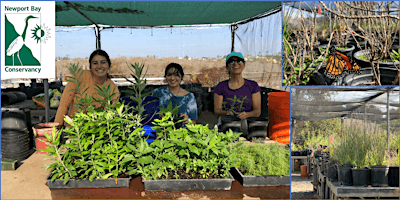
Goose Barnacle
Adapted from an Article by Naturalist and UCI Professor Peter Bryant that appeared in the March 2009 edition of Tracks
Who is cleaning the Bay? The answer may surprise you! But if you have attended our Marine Life Inventories and participated in analyzing the mud samples, you probably have some clues. The bottom of the Bay supports huge populations of numerous kinds of invertebrates, most of which live by filter feeding. The most abundant are various types of bivalve mollusks (clams, mussels and oysters) and polychaete worms. They filter out and consume huge amounts of phytoplankton, as well as bacteria and other particles, thereby making an enormous contribution to maintaining water quality. There are also sponges, anemones, sea squirts, and many kinds of crustaceans, many of which also live by filter feeding and so help to maintain the bay’s water quality.
There are two kinds of filter feeders, which I will call internal and external filter feeders.
Internal filter feeders have a basket-like filter inside a body cavity which opens to the outside through two siphons. They bring in water through one opening (the “incurrent siphon”), pump it through the filter to remove microscopic food particles, and discharge it through another opening (the “excurrent siphon”). The food particles are moved from the filter itself to the animal’s mouth by specialized cell processes called cilia.
Mussels are among the most important of the internal filter feeders. Their shells close up when they are left dry by the tide, but when submerged they spread apart the two halves of the shell (the two “valves” in the bivalve) to reveal a wide incurrent siphon surrounded by pink tentacles that prevent the entry of items that are too large. Inside the shell, the gills do the job of filtering out food particles, and then the water is discharged through a smaller, oval, excurrent siphon. The water is moved through the animal by a poorly understood “bivalve pump” with the pumping force generated by bands of lateral cilia that run along the sides of the gill filaments. The food is wiped off the gills by a pair of appendages called palps, and is then transferred to the mouth deep inside the shell. Similar arrangements can be seen in the oysters and scallops. Studies have shown that an individual mussel or oyster can filter over a gallon of water per hour.
In many other bivalves, especially the burrowing ones including all the clams, both siphons are simple tubes, and in some cases they are much longer than the rest of the animal. This allows the animal to live in safety deep in the mud while the siphons emerge above the surface (although those siphons are often nibbled by hungry fish and other carnivores!). Bivalves feed on plankton, as well as benthic algae and detritus, and in turn they provide food for echinoderms, fish, birds and other animals.
Other filter feeders use an external filter. This strategy is used by all the barnacles, both acorn and goose, as well as several kinds of polychaete worms. Barnacles are actually greatly modified crustaceans, in effect standing on their heads and using their legs for filtering. But instead of pumping water over the filter, these animals use a grasping motion, rhythmically extending their feet upwards into the water, and then quickly bringing them back inside the shell along with any captured food.
A similar external but retractable filter is used in the tube-dwelling polychaete worms, often called “feather dusters”. Some of these live in tubes made of mucus and sand; others make a harder, calcified tube. They are able to retract and close a door (operculum) when threatened by low tide or predation.
A unique type of filter feeding has evolved in a species called the Fat Innkeeper Worm. This animal constructs and lives in a U-shaped burrow, and it secretes a net of slime that filters out food as the worm pumps water through the tube. When the net is fully loaded with food, the worm swallows the food along with the net, and then makes a new net. The burrow of the Fat Innkeeper Worm makes an excellent home for a variety of commensal animals, including a small fish called a goby, a pea crab, a clam and a scale worm, all of which feed on the Innkeeper’s leftovers. The regular presence of these guests is what gives the animal its name!
Some of our filter feeders are colonial, and the individual members of a colony often make amazingly regular patterns. In the bryozoans (also called ectoprocts or moss animals), the individuals (called zooids) are microscopic and in perfectly regular arrays. One of these colonial animals is responsible for the gray patches you often see on seaweeds washed up on the beach, but other bryozoans form patches on mussels, sea squirts and other solid surfaces. Each zooid has a ring of tentacles that are withdrawn into a box-shaped skeleton when the colony is taken from the water; but when the zooid is submerged the tentacles are extended to trap food particles and pass them into the central mouth. Some sea squirts (tunicates) are also colonial, but they take the colonial philosophy one step further: they have individual incurrent siphons, but a group of animals shares a single excurrent siphon.
Like many other bays and estuaries, Upper Newport Bay is affected by a condition called eutrophication. This refers to a process where the bay receives excess chemical nutrients (nitrates and phosphates, usually from fertilizer runoff) that fertilize
the growth of excess phytoplankton. The phytoplankton eventually sinks to the bottom and provides fuel for bacterial decomposition, leading to anoxic conditions in bottom waters. Since filter feeders consume phytoplankton, they play an enormously important role in limiting eutrophication and maintaining water quality.









